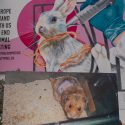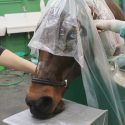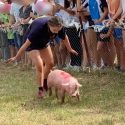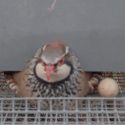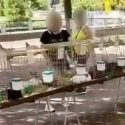You have until 31 August to sign and get those you know to sign to compel the European Commission to look into the proposals made by this initiative!
Archives: News
One Voice is raising awareness among the public for animals kept in dolphinariums and circuses in 13 towns throughout July
In July, in 13 towns in France, One Voice will raise awareness among the public of the exploitation of animals for entertainment in circuses and dolphinariums.
At the National Veterinary School of Alfort, animal testing is a laughing matter
In a video published in 2021 in an article by EnvA, we hear the staff laughing heartily while one of these horses is in the middle of experimental surgery.
Pig trifecta: a letter to the Vabres l’Abbaye mayor
Pig trifecta: a letter to the Vabres l’Abbaye mayor
Pig trifecta: a letter to the Vabres l’Abbaye mayor
11.07.2022
Aveyron
Pig trifecta: a letter to the Vabres l’Abbaye mayor
Exploitation for shows
We have received images and videos of the 46th pig trifecta in Vabres l’Abbaye. They show pigs squealing, exposed to crowds and noise, and forced to keep moving as quickly as possible… We have written to the Mayor.
Mr Frédéric Artis
Mayor of Vabres l’Abbaye
Hôtel de Ville
12400 Vabres l’Abbaye
Vannes, 11 July 2021
Dear Mayor,
We have been warned by the organisation about the 46th pig trifecta on 3 July in Vabres l’Abbaye.
In our capacity as an association with the main purpose to protect and defend animals and the environment, we are concerned by the treatment in store for them.
The images and videos that we have been given show pigs squealing, exposed to crowds and noise, and forced to keep moving as quickly as possible. The animals are clearly disorientated and absolutely do not understand what awaits them.
Voluntarily submitting animals to such levels of stress for a purely recreational purpose is cruel and unethical. The pigs, who are nevertheless animals with extraordinary cognitive and sentient abilities, are reduced to numbers here.
Such an event has serious repercussions on the public and particularly children. The pigs are considered as objects of entertainment with no consideration for their needs or desires. This performance is regressive in educating future generations to respect their environment and the individuals with whom they share it.
No tradition can justify mistreating animals. This situation certainly tarnishes the image of Vabres l’Abbaye which also has an undeniable cultural significance. The celebration of the village festival must not happen to the detriment of respect for animals.
This is why we are asking you in future to renounce the organisation of pig trifectas in favour of more ethical events.
We thank you for your attention to this letter and ask that you accept our highest consideration, Mr Mayor.
Muriel Arnal
Founding President of One Voice
Translated from the French by Joely Justice
Tens of thousands of mice are still being killed for botox! One Voice is demanding a ban on animal testing.
The European Coalition to End Animal Experiments (ECEAE), of which One Voice is a member, has revealed that hundreds of thousands of mice are killed in Botox tests with great cruelty despite the existence of non-animal tests. On 9 July, the ECEAE organised a European Action Day and is demanding the responsible authority, the European Directorate for the Quality of Medicines and Healthcare (EDQM), to abolish this regulatory testing.
Pleas and unpublished images from One Voice on pheasants and partridges being bred for hunting in La Peyratte
In La Peyratte in the Deux-Sèvres department, pheasants and partridges bred for hunting, as well as the environment, pay a huge price. One Voice has published images and is filing an appeal with L214.
‘Macellum’ farmers’ market: open letter to the town of Metz
Several domestic animals (rabbits, pigeons, cows, donkeys, hens) have been displayed to visitors in enclosures or cages. We are asking Metz to renounce the exhibition of animals in such conditions in future by making more educational displays a priority.
Hundreds of monkeys unloaded from the cargo of an Egyptair plane at JFK Airport
On 23 June 2022, hundreds of long-tailed macaques were filmed by PETA in the process of being unloaded from an Egyptair cargo plane which had just landed at JFK Airport in the United States.
A deliberation in Marineland’s favour: a representation of the road still to be travelled to defend the orcas at the dolphinarium
We are not asking for the impossible, just for the justice system to agree that an independent study will be carried out on Marineland for the orcas…
One Voice and its partners are getting Air France to stop transporting primates for animal testing!
One Voice and its partners are getting Air France to stop transporting primates for animal testing!
One Voice and its partners are getting Air France to stop transporting primates for animal testing!
30.06.2022
One Voice and its partners are getting Air France to stop transporting primates for animal testing!
Animal testing
It is official: today, Thursday 30 June 2022, Air France has just publicly announced it on Twitter under a post supporting our campaign: “Air France has decided to stop transporting primates”.
Bonjour, en cohérence avec sa stratégie RSE, Air France a décidé d’arrêter le transport de primates. Elle y mettra fin dès l’issue de ses engagements contractuels en cours avec les organismes de recherche.
— Air France Newsroom (@AFnewsroom) June 30, 2022
After years of relentless struggles, One Voice have got Air France to stop primate transportation. It is a huge victory that we share with our British partners, Action For Primates, and Spanish one, Stop Camarles, but also with members of the European coalitions that we are part of, the European Coalition to End Animal Experiments (ECEAE) and Cruelty Free Europe, and who, for many among us, have taken on the fight that has stopped the transport of monkeys from and to foreign countries into France.
Muriel Arnal, President of One Voice, stated:
“France is one of the rare countries in Europe which continues to experiment on primates, experiments in which the suffering inflicted on our cousins is generally severe. Since 1996 (One Voice was called Aequalis at the time), we have requested that Air France stops taking part in this torture inflicted on primates. We are extremely happy about this decision, even if it comes late in relation to what is at stake and in relation to other companies.”
Air France was one of the last large national companies to continue taking part in the cruel trade of animals for laboratories, and monkeys in particular, coming mainly from the Republic of Mauritius
where they are violently captured in the wild and destined for breeding (at Biosphere Trading for example) and many among them are sent abroad, turning France into a hub for this trade that is certainly legal, but despicable. European parliamentarians have thus themselves also taken part in our fight for the Mauritian macaques destined to die on laboratory benches.
This decision is in part due to collecting a million signatures under the framework of the European Citizens’ Initiative in favour of stopping testing on animals for cosmetics, and a unanimous vote by Members of the European Parliament for a progressive elimination of animal testing in the EU in September 2021, as well as the effective implementation at the end of the year for the ban on using F1 primates (from the first generation born in captivity from parents captured in the wild), and many other national and freight
companies having stopped these activities.
We spare a thought for the macaques in Indonesia, Cambodia, and Mauritius, passing through the Silabe
platform (in collaboration with the University of Strasbourg), and for those still being transported by other companies (Wamos Air or EgyptAir, Air Bridge Cargo…), but also via Russia or the United States, against which our work to raise awareness will continue tirelessly.
Of course, we are going to contact Air France as soon as possible in order to learn more on the terms of this cessation, because the publication mentions that it will not be effective immediately but at the end of the contracts in place with research laboratories.
We are counting on you to continue to sign the petition to put a stop to transporting monkeys from Mauritius. And you can always add your voice to the European Citizens’ Initiative SaveCrueltyFreeCosmetics, which, as you may know, does not have a direct link with primates, but also calls for an eventual stop to testing on all animals within the European Union.
Translated from the French by Joely Justice
